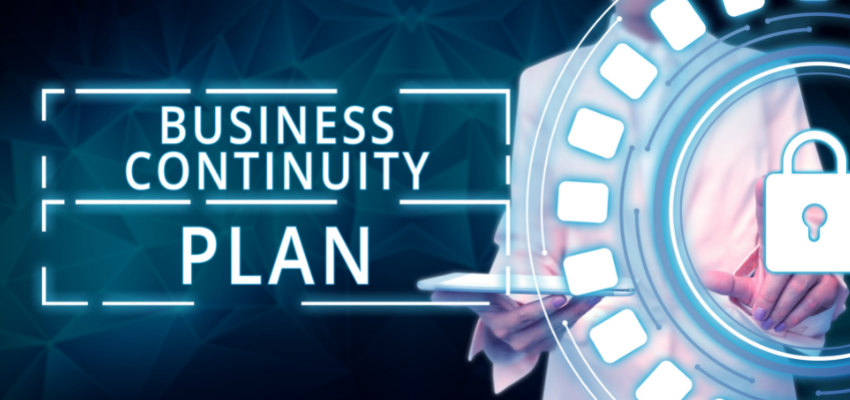Show:
What is a Business Continuity Plan?
A Business Continuity Plan (BCP) is a carefully crafted plan that helps a business maintain smooth operations even when faced with unexpected challenges such as natural disasters, cyber-attacks, or emergencies. It includes clear guidance to reduce disruptions, allowing key functions to run smoothly and recover quickly from different threats.

The primary goals of Business Continuity Planning are:
- Ensuring Business Continuity: By outlining critical process procedures, a BCP makes sure key functions can resume quickly, keeping downtime and financial losses to a minimum.
- Mitigating Risks and Reducing Impact: By identifying risks and using tailored strategies, a BCP works to lessen impact on the business.
- Preserving Reputation and Customer Trust: A well-prepared BCP upholds the company’s reputation by demonstrating reliability and dedication to meeting obligations for clients and stakeholders.
Essential Components of a BCP
Business Continuity Plan (BCP) Components:
- Business Impact Analysis (BIA): A BIA is a process for identifying and assessing the potential impact of disruptions on a business. It is a critical step for disaster preparedness, as it helps businesses to understand their vulnerabilities and develop plans to mitigate the impact of disruptions.
- Risk Assessment: Identify possible risks and understand how they might affect the way the business operates.
- Recovery Strategies: Have plans in place to efficiently recover important tasks after a disruption.
- Crisis Communication Plan: Establish clear ways to share information during challenging situations.
- Data Backup and Recovery: Ensure critical data is saved and can be quickly restored to keep the business running smoothly.
- Training and Awareness Programs: Prepare staff and make sure they understand their roles during disruptions.
Regular Review and Update of the BCP
Maintaining the effectiveness of a BCP requires regular review and updates, including reviewing the BCP at least annually and after significant organizational changes. This can help make changes in the plan to align with current business objectives, risks, and processes.
Common Challenges in BCP Implementation
Implementing a BCP is can be challenging for any organization. You need strong buy in and commitment from the management team so that all potential issues, including resource constraints, both financial and human, can be addressed effectively. The size and complexity in large corporations pose another challenge. To deal with this, a good plan and smart resource management are needed.
Integration of BCP with Other Business Processes
To optimize the effectiveness of a BCP, it needs to integrate with other business processes. This integration involves alignment with business objectives, ensuring BCP strategies align with overall organizational goals and processes. Making sure all departments can work well together, and critical tasks can continue smoothly during a problem, helps handle disruptions better.
The Human Element
While structures and strategies form the foundation of a Business Continuity Plan (BCP), the human element, represented by the employees, is equally as important. Employees are the driving force behind successful BCP implementation. Educating and empowering them to understand their roles and responses during disruptions is important. Conducting regular training sessions and drills creates a workforce that is not only aware but also confident in handling unexpected situations.

Encouraging everyone in the company to be prepared has a large effect on how well the plan works. When everyone, from the top to the bottom, understands and sees how important the plan is, it works even better. Employees are the moving parts of the plan, adjusting and reacting to unexpected situations, making sure the business keeps going and stays strong.
Encouraging feedback and participation in BCP drills helps refine the plan, making it more practical and applicable. This process turns the BCP into a dynamic, living guide that evolves with the organization’s needs and external changes. Ultimately, it is the commitment and involvement of each employee that changes a BCP from a documented strategy into a living, functional guide that ensures business continuity during challenging times.
How to Create a BCP
Creating a robust Business Continuity Plan (BCP) is a structured process that involves careful planning and implementation. When organizations spend time and energy creating a BCP, they’re building a strong base that ensures stability and strength, even when unexpected things happen. It’s a smart step that keeps a business running smoothly and shows stakeholders that the organization is ready and strong. Here’s a step-by-step guide to develop an effective BCP:
Preparation
- Establishing a BCP Team: Form a dedicated BCP team comprising individuals from various departments with diverse skill sets to contribute to the planning and execution of the BCP.
- Risk Assessment and Business Impact Analysis: Conduct a thorough risk assessment to identify potential threats and vulnerabilities. Analyze the potential impact of these risks on critical business functions and processes.
BCP Development
- Identifying Critical Business Functions and Processes: Identify and prioritize the key business functions and processes critical for maintaining operations during and after a disruption.
- Establishing Recovery Time Objectives (RTOs) and Recovery Point Objectives (RPOs): Define the acceptable downtime for each critical function (RTO) and the maximum data loss tolerance (RPO) to guide the recovery process.
- Identifying Resources and Solutions: Determine the resources (human, technological, financial) required to resume operations swiftly and efficiently. Identify and allocate appropriate solutions and technologies to support recovery efforts.
BCP Documentation
- Writing the BCP Document: Document the entire BCP, including strategies, procedures, and roles and responsibilities, in a clear and accessible format. Ensure the document is structured, detailed, and easy to comprehend for all stakeholders.
- Identifying Roles and Responsibilities: Clearly define roles and responsibilities for each team member involved in executing the BCP. Assign specific tasks and duties to individuals based on their expertise and positions within the organization.
Testing and Validation
- Conducting Regular BCP Drills and Exercises: Organize regular drills and simulation exercises to test the effectiveness of the BCP. Involve the BCP team and relevant stakeholders to simulate real-life scenarios and evaluate the response and coordination.
- Analyzing Test Results and Refining the Plan: Analyze the outcomes of the drills and exercises to identify strengths, weaknesses, and areas for improvement. Use the insights gained to refine and enhance the BCP, ensuring it remains up to date and effective in addressing emerging risks and challenges.
Business continuity plans are essential for any business that wants to protect its assets, reputation, and customers. Making the effort to invest in a BCP, businesses can minimize the impact of disruptions and ensure that they can continue to operate even in the face of unforeseen challenges.

 Return to Previous Page
Return to Previous Page








